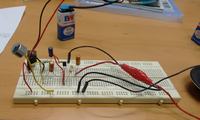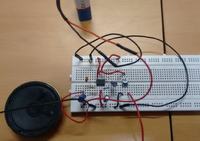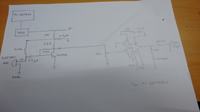arnab_2014
Newbie level 5
I had tried to build an audio amplifier using a preamp build out of a transistor and thereafter using lm386 for the audio amplifier. I had received a suitable response using an earphone. But when I use an 8 ohm 0.5 speaker the audio output gets distorted and also the sensitivity reduces. Also I am unable to eliminate the mains noise which distorts the output of the speaker. Along with it when I increase the volume control or the gain control too high i hear a sharp beep sound of 2.7 kHz. I would love to hear what improvments i could make in the circuit to make it sensitive as well as clear


Last edited by a moderator:




